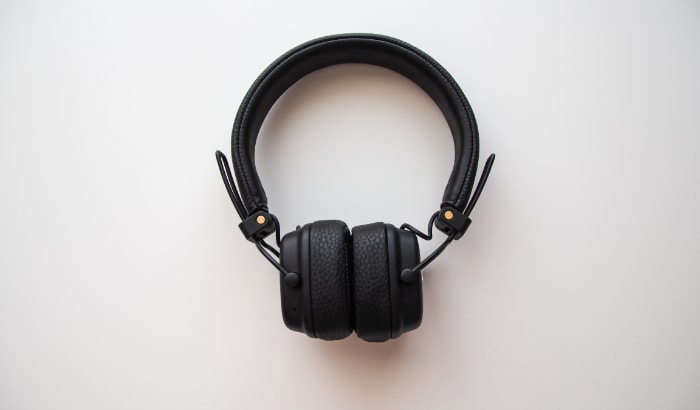Bluetooth 5.0 vs. 5.3: Which Version is Right for You?

In today’s interconnected world, Bluetooth technology has become a fundamental aspect of our daily routines, allowing us to wirelessly connect and communicate between a diverse array of devices, such as smartphones, headphones, wearables, and more.
Over time, Bluetooth has experienced considerable advancements, with each new version introducing improved features and capabilities to offer enhanced performance, connectivity, and user experience.
As we examine the primary differences between these two versions, we will highlight their distinct features, advantages, and the way they impact the overall functionality and performance of connected devices.
Whether you are a technology enthusiast or just considering an upgrade for your devices, this comparison will equip you with valuable insights to help you determine which Bluetooth version is the most suitable for your specific requirements. So, without further ado, let’s embark on our detailed exploration of Bluetooth 5.0 and 5.3.
Bluetooth 5.0: Features and Advantages
In this section, we will explore the main features and advantages of Bluetooth 5.0.
Increased Range
One of the most significant improvements introduced with Bluetooth 5.0 is its extended range. Compared to its predecessor, Bluetooth 4.2, version 5.0 can deliver up to four times the range, allowing devices to maintain stable connections even when separated by greater distances.
This enhancement is particularly beneficial for smart home and IoT applications, where devices need to communicate across larger areas without losing connection.
Improved Data Transfer Speed
Bluetooth 5.0 also offers a significant boost in data transfer speed, with the ability to transmit data at a rate twice as fast as Bluetooth 4.2.
This increase in speed enables quicker and more efficient data transfers between devices, resulting in improved performance for various applications, including file sharing, wireless audio streaming, and wearable device synchronization.
Enhanced Connection Reliability
With the introduction of Bluetooth 5.0, connection reliability has been improved as well. This version of Bluetooth offers increased robustness against interference from other wireless signals, such as Wi-Fi and other Bluetooth devices, ensuring more stable connections between devices.
This improvement is particularly important for maintaining high-quality audio streaming and minimizing disruptions during data transfers.
Real-Life Applications and Use-Cases
Bluetooth 5.0 has found its way into a wide range of applications, including consumer electronics, smart home systems, wearables, and more. Its improved range, speed, and reliability have made it the go-to choice for many device manufacturers, ensuring seamless connectivity for their users.
Some examples of Bluetooth 5.0 applications include wireless speakers, smartwatches, fitness trackers, and home automation systems, among others.
Bluetooth 5.3: Key Improvements and Innovations
In this section, we will discuss the significant improvements and innovations introduced with Bluetooth 5.3.
Enhanced Audio Capabilities
Bluetooth 5.3 introduces Low Energy (LE) Audio, a groundbreaking feature that delivers higher audio quality while consuming less power.
The Low Complexity Communications Codec (LC3) incorporated in LE Audio enables more efficient audio compression, resulting in better sound quality at lower bit rates. This improvement makes Bluetooth 5.3 an excellent choice for wireless audio devices, such as headphones, earbuds, and speakers.
Multi-Stream Audio
Another notable innovation in Bluetooth 5.3 is the support for multi-stream audio. This feature allows multiple audio streams to be transmitted simultaneously from a single source to different devices or speakers.
Multi-stream audio enhances the user experience by enabling seamless audio sharing and synchronized playback across multiple devices.
Improved Power Efficiency
Bluetooth 5.3 has been designed with power efficiency in mind. It incorporates several optimizations that reduce energy consumption during data transmission and idle periods.
This improved power efficiency not only extends the battery life of connected devices but also contributes to a more environmentally friendly approach to wireless connectivity.
Longer Battery Life for Connected Devices
The increased power efficiency of Bluetooth 5.3 directly translates to longer battery life for devices that rely on this technology. Users can enjoy extended usage times for their smartphones, wearables, and other Bluetooth-enabled devices without the need for frequent recharging.
Enhanced Security Features
Bluetooth 5.3 introduces an improved Secure Simple Pairing process that enhances the security of device connections. This new pairing method reduces the risk of unauthorized access and eavesdropping during the initial connection establishment, ensuring a more secure and private user experience.
Improved Encryption Algorithms
In addition to the improved pairing process, Bluetooth 5.3 also features enhanced encryption algorithms that provide stronger security for data transfers between devices.
These advanced algorithms make it more difficult for potential attackers to intercept or tamper with the data being transmitted, offering users greater peace of mind.
Real-Life Applications and Use-Cases
With its advanced features and innovations, Bluetooth 5.3 is well-suited for a wide range of applications, including next-generation wireless audio devices, smart home systems, wearables, and more.
Its enhanced audio capabilities, power efficiency, and security improvements make it an attractive option for device manufacturers looking to deliver cutting-edge connectivity and performance to their users.
Bluetooth 5.0 vs 5.3: Head-to-Head Comparison

In this section, we will provide a head-to-head comparison between Bluetooth 5.0 and 5.3.
Range
Both Bluetooth 5.0 and 5.3 offer an extended range compared to previous versions, allowing devices to maintain stable connections over greater distances. While both versions provide similar range capabilities, the additional features in Bluetooth 5.3 can contribute to better overall performance in certain use cases.
Data Transfer Speed
Bluetooth 5.0 introduced a substantial improvement in data transfer speed, doubling the rate of its predecessor, Bluetooth 4.2. Bluetooth 5.3 maintains this enhanced speed, ensuring that both versions offer quick and efficient data transfers between devices.
Connection Reliability
Both Bluetooth 5.0 and 5.3 offer improved connection reliability compared to older versions, with increased robustness against interference from other wireless signals. This ensures more stable connections between devices and minimizes disruptions during data transfers and audio streaming.
Audio Quality
While Bluetooth 5.0 provides a solid foundation for wireless audio streaming, Bluetooth 5.3 takes it a step further with its enhanced audio capabilities. The introduction of LE Audio and the LC3 codec in Bluetooth 5.3 enables higher audio quality at lower bit rates and improved power efficiency, making it a superior choice for audio devices.
Power Efficiency
Bluetooth 5.3 is designed with power efficiency in mind, incorporating several optimizations that reduce energy consumption during data transmission and idle periods. This improved power efficiency extends the battery life of connected devices, making Bluetooth 5.3 a more environmentally friendly and user-friendly option compared to Bluetooth 5.0.
Security
Both Bluetooth 5.0 and 5.3 offer enhanced security features compared to previous versions. However, Bluetooth 5.3 introduces an improved Secure Simple Pairing process and stronger encryption algorithms, providing a more secure and private user experience. This makes Bluetooth 5.3 a better choice for users who prioritize security and privacy in their wireless connections.
Choosing Between Bluetooth 5.0 and 5.3
In this section, we will guide you through the decision-making process when choosing between Bluetooth 5.0 and 5.3.
Assessing Individual Needs and Priorities
When deciding between Bluetooth 5.0 and 5.3, it’s essential to consider your specific needs and priorities. If high-quality audio, improved power efficiency, and enhanced security are crucial factors for you, Bluetooth 5.3 might be the better choice.
However, if you’re more concerned with range, data transfer speed, and connection reliability, both versions offer similar capabilities in these areas.
Device Compatibility Considerations
Before opting for a particular Bluetooth version, it’s important to ensure that your devices are compatible with it. While most new devices support Bluetooth 5.0 and 5.3, some older devices might only be compatible with earlier versions.
Be sure to check the compatibility of your existing devices and any new devices you plan to purchase to avoid potential connectivity issues.
Upgrade Advice for Existing Bluetooth 5.0 Users

If you’re currently using Bluetooth 5.0 and considering an upgrade to Bluetooth 5.3, weigh the benefits and potential drawbacks carefully.
While Bluetooth 5.3 offers some key improvements, such as enhanced audio capabilities and increased power efficiency, these may not be significant enough to warrant an immediate upgrade, particularly if your current devices are functioning well.
However, if you’re planning to purchase new devices or if the additional features in Bluetooth 5.3 align with your priorities, upgrading could be a wise decision. In any case, it’s essential to make an informed choice based on your unique requirements and the specific advantages each version offers.
The Future of Bluetooth Technology
In this section, we will speculate on the future of Bluetooth technology, discussing predictions for upcoming Bluetooth iterations, potential integration with other wireless technologies, and the role of Bluetooth in the advancement of IoT applications and systems.
Predictions for Future Bluetooth Iterations
As technology continues to advance, we can expect further enhancements and innovations in Bluetooth technology.
Future iterations of Bluetooth will likely focus on improving existing features, such as range, data transfer speed, and power efficiency, while also incorporating new capabilities to address emerging user demands and market trends.
Integration with Other Wireless Technologies
As the IoT ecosystem expands and new wireless technologies emerge, the integration of Bluetooth with other wireless protocols, such as Wi-Fi and 5G, will become increasingly important.
This integration will enable seamless communication between various devices and systems, paving the way for more advanced and interconnected smart environments.
Potential Applications and Advancements in IoT
Bluetooth technology will continue to play a critical role in the development of IoT applications and systems. As Bluetooth evolves, we can expect to see more sophisticated IoT use cases, such as advanced smart home systems, industrial automation, and intelligent transportation.
Additionally, with the growing focus on sustainability and energy efficiency, future Bluetooth iterations will likely prioritize power-efficient solutions to minimize the environmental impact of connected devices.
Conclusion
In this comprehensive comparison between Bluetooth 5.0 and 5.3, we have explored the key features, advantages, and differences between these two popular iterations of Bluetooth technology.
While both versions offer significant improvements in range, data transfer speed, and connection reliability compared to their predecessors, Bluetooth 5.3 stands out with its enhanced audio capabilities, improved power efficiency, and stronger security features.
When choosing between Bluetooth 5.0 and 5.3, it’s essential to consider your specific needs, device compatibility, and whether an upgrade is warranted based on the additional features each version offers. As we look to the future, we can expect further advancements in Bluetooth technology, with new iterations focusing on improving existing features and integrating with other wireless protocols to deliver seamless communication between devices and systems.
Ultimately, staying up-to-date with the latest developments in Bluetooth technology is crucial for making informed decisions and ensuring the best possible user experience with your connected devices.
By understanding the key differences between Bluetooth 5.0 and 5.3, you can make the right choice for your individual needs and enjoy the numerous benefits that this groundbreaking wireless technology has to offer.


